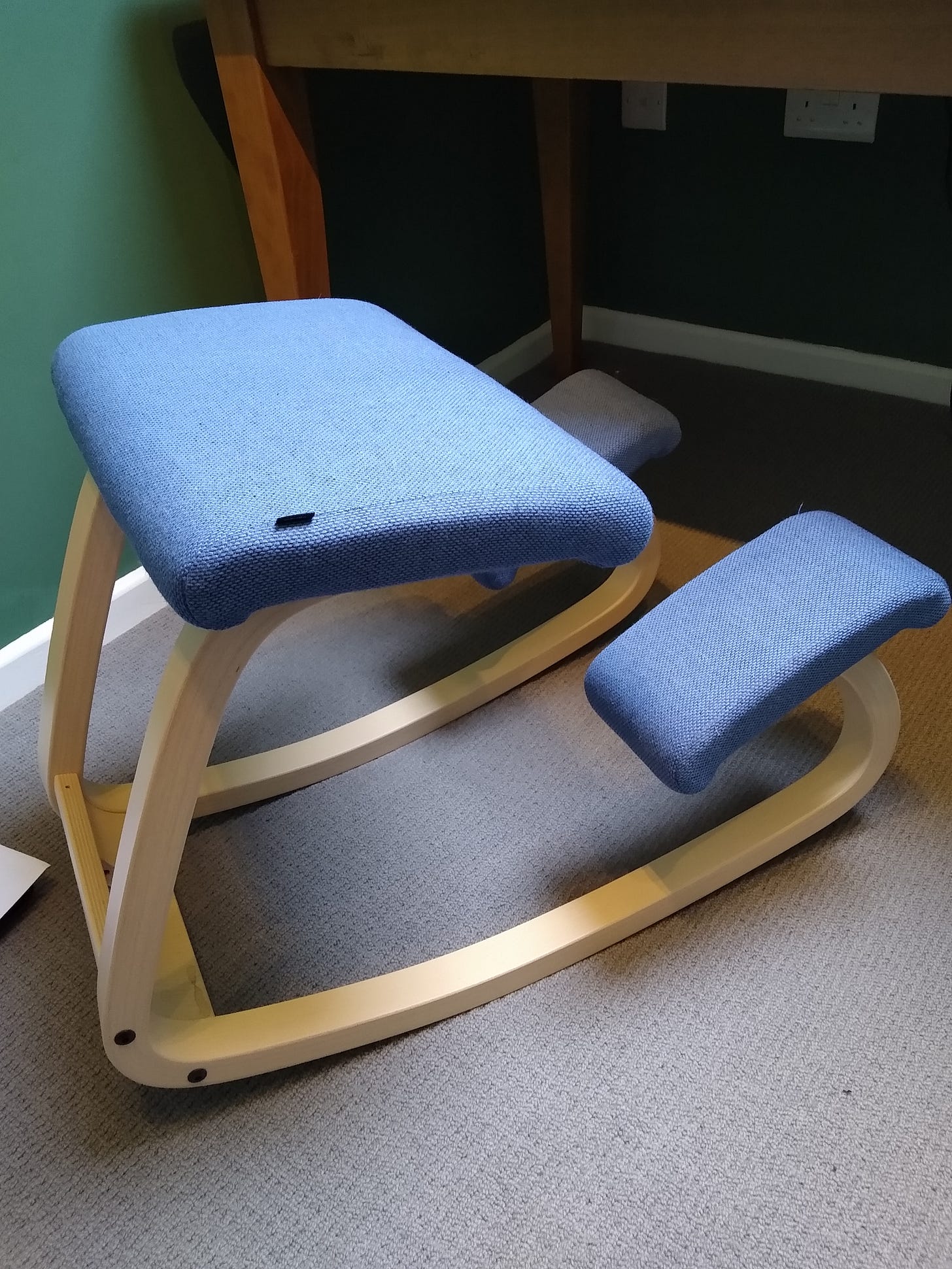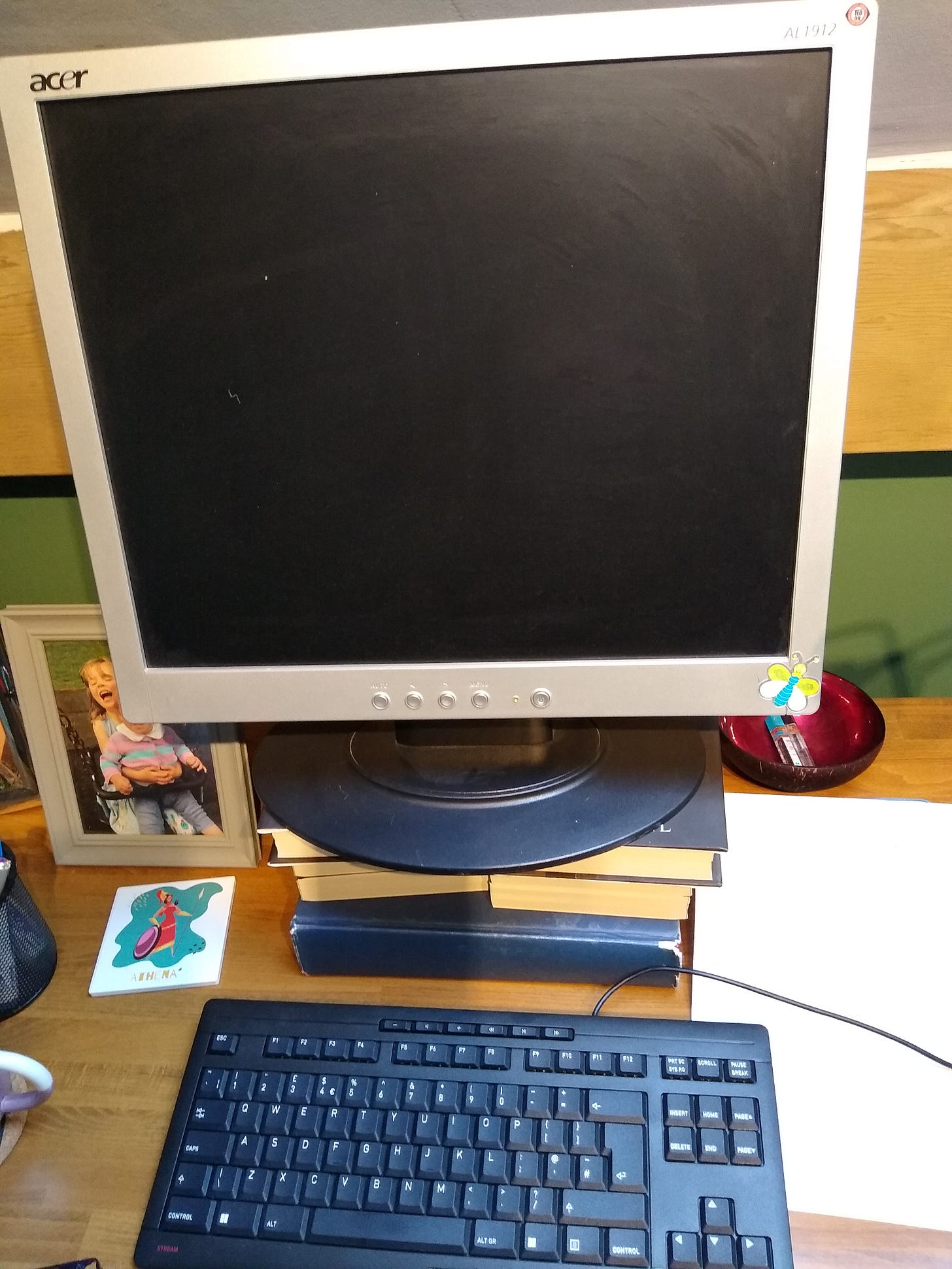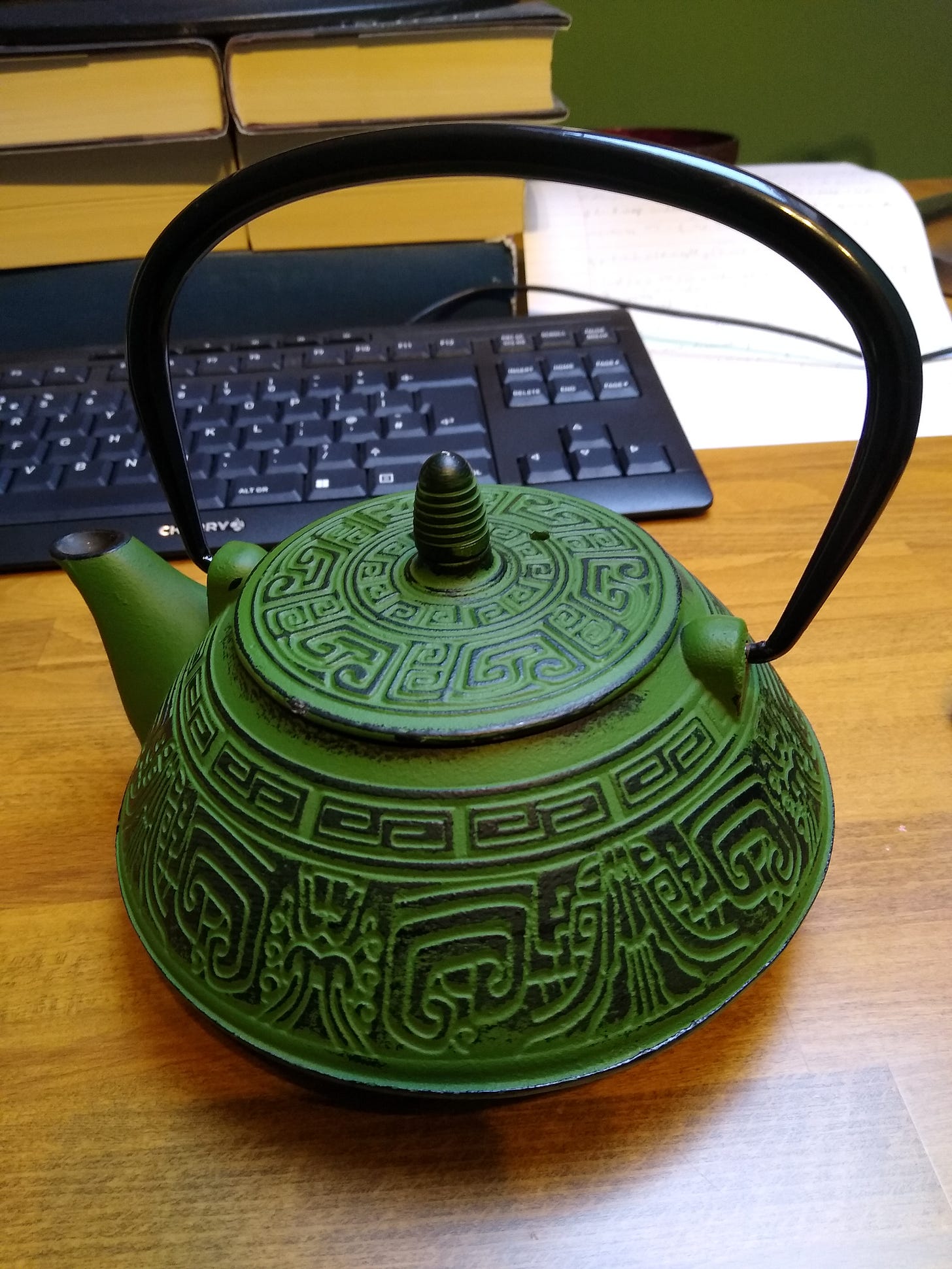For all that it relies on flights of imagination and subtleties of language, writing fiction is primarily a practical business. We take our seat day after day, make our marks on the page, and patiently sculpt our narratives.
It’s a craft that requires practice, diligence and workmanlike habits. And like any craft it helps immensely if we use the right tools.
These are four of the objects I use every day and wouldn’t want to be without:
Kneeling Chair
During a bad time with my writing, when my second novel was going nowhere, I suddenly became aware that my posture was mirroring my mental state. I was either hunched aggressively over my desk, trying to force the story to do my bidding; or I was slumped back in defeat.
As part of a full overhaul of my creative process, I bought this kneeling chair. It encourages “active sitting”: you have to put in the slightest effort to hold yourself upright. As every good yogi knows, there’s a strong feedback loop between body position and state of mind. In my case, sitting this way has literally helped me find a balance between trying too hard and slacking off; between alertness and relaxation
Mechanical Pencil
I like to write my drafts freehand, preferring the open playground of a notebook page to the prescriptive confines of a Word document. I scribble and annotate and make a mess. I prefer the tactile scratch of a pencil to a pen. This Japanese-made mechanical pencil is perfectly weighted and balanced; just picking it up makes me eager to write. It was one of the last gifts my mum gave me before she died. My eldest daughter made a cradle for it out of clay. These are sacred objects that help imbue my craft with a sense of ritual and reverence
Venerable Desktop Computer
After writing the first draft freehand, I transcribe the pages onto this trusty workhorse of a computer. It has never and will never be connected to the internet: I don’t want the potential distraction or the added complication. It is purely a word processor; an electronic typewriter. It needs no malware protection, suffers no updates.
Having used it to write three novels, it is by now an old friend, its background hum companionable, its quirks endearing. It is a blacksmith’s hammer; a carpenter’s chisel; a reliable, no-nonsense tool that does everything I ask of it and nothing more
Teapot
I love coffee but it makes me overexcited. A novel is an endurance race; better to be the tortoise than the hare. So at my desk I drink gunpowder green tea. Along with caffeine it contains L-Thianine, a combination that is calmly stimulating. By now, this habit has become Pavlovian: I only need to smell gunpowder green tea for my writing hand to start to twitch!
How about you? What treasured tools do you use?
Thanks for being here, and happy reading!
Tim









I like how your computer monitor is bolstered by a pile of books!
I think posture is the bane of writers and artists. I use a standing desk, which has helped a lot for most of my work, but I still sit when writing - a battered old laptop in a comfy chair. I think Scrivener is my only essential tool - it's just so handy for organisation. I set it to full screen, no distractions mode, with white text on black.
Fascinating insights, Tim and I love that teapot, even though I never drink tea!!!